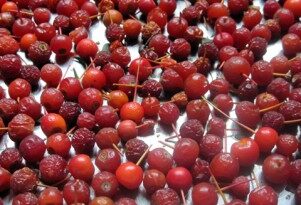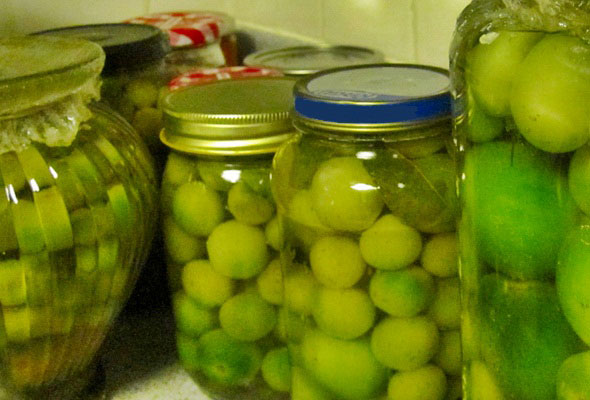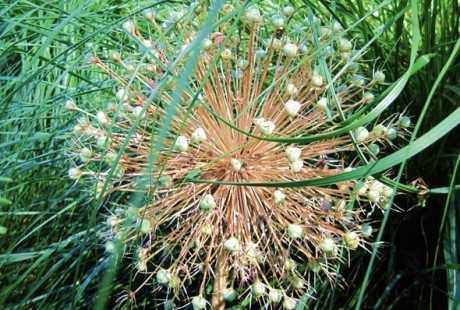bee trivia
There must be a hive somewhere in the neighborhood, because bees visit my garden very often, to gather nectar from their favorite flowers. Sedums produce an abundance of it, and their small flowers make an insect’s work a little easier.
Did you know that a worker bee lives just forty days over the summer and during all this time of collecting nectar it only manages to gather a twelfth of a teaspoon’s worth of honey? I feel guilty now, just thinking of all the times honey dripped off the bread.
Worker bees are exclusively female and sterile, and they are responsible for all the work in the hive, from cleaning to building repairs, caring for the young and of course, gathering nectar and pollen. There is no biological difference between a worker bee and a queen bee. When the hive needs a new queen it starts feeding one of the female larvae only royal jelly. This bee ambrosia makes them grow one and a half times bigger, extends their lifespan to sixty times that of a regular bee and kick starts their fertility cycle.
When bees are cared for by bee keepers, the queen is purposefully bred and introduced to the hive, which often, but not always, accepts her without a challenge.
Since queen bees need to be replaced regularly, the beekeeping industry uses a color code, to keep track of the queen’s birth year. It is common practice for queen bees to be marked with a small dot of the year’s color on their throat or thorax, usually by the breeder.
The queen bee’s productive lifespan is usually two to three years. This seems dire if you don’t compare it with the average life of a worker bee.
Don’t avoid these beneficial insects. They rarely sting unless threatened and will allow you to get very close if you don’t bother them, which explains how I took this picture.




 Previous Post
Previous Post Next Post
Next Post




